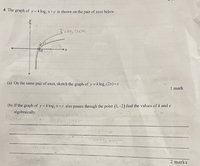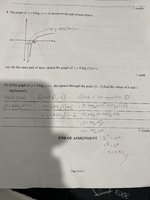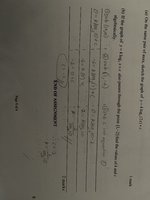Hi guys, I’m just horribly stuck on this question, I’ve attempted 4a), but I’m not too sure if it is correct.
I’m very stuck on 4b), I don’t want to be fed the answer, but maybe a hint of what concept, or logarithm law I should be using.
Thanks in advance !!
I’m very stuck on 4b), I don’t want to be fed the answer, but maybe a hint of what concept, or logarithm law I should be using.
Thanks in advance !!



